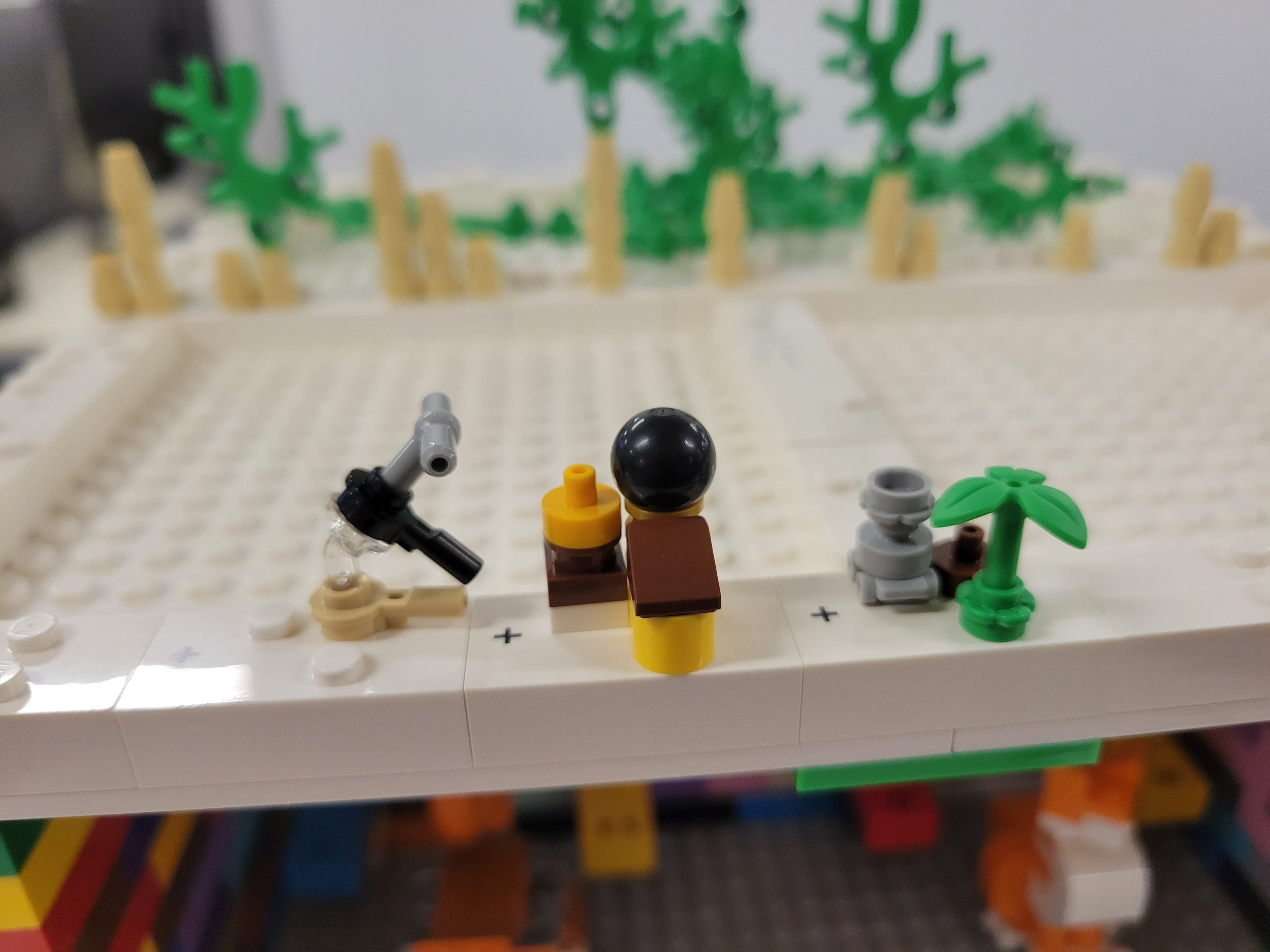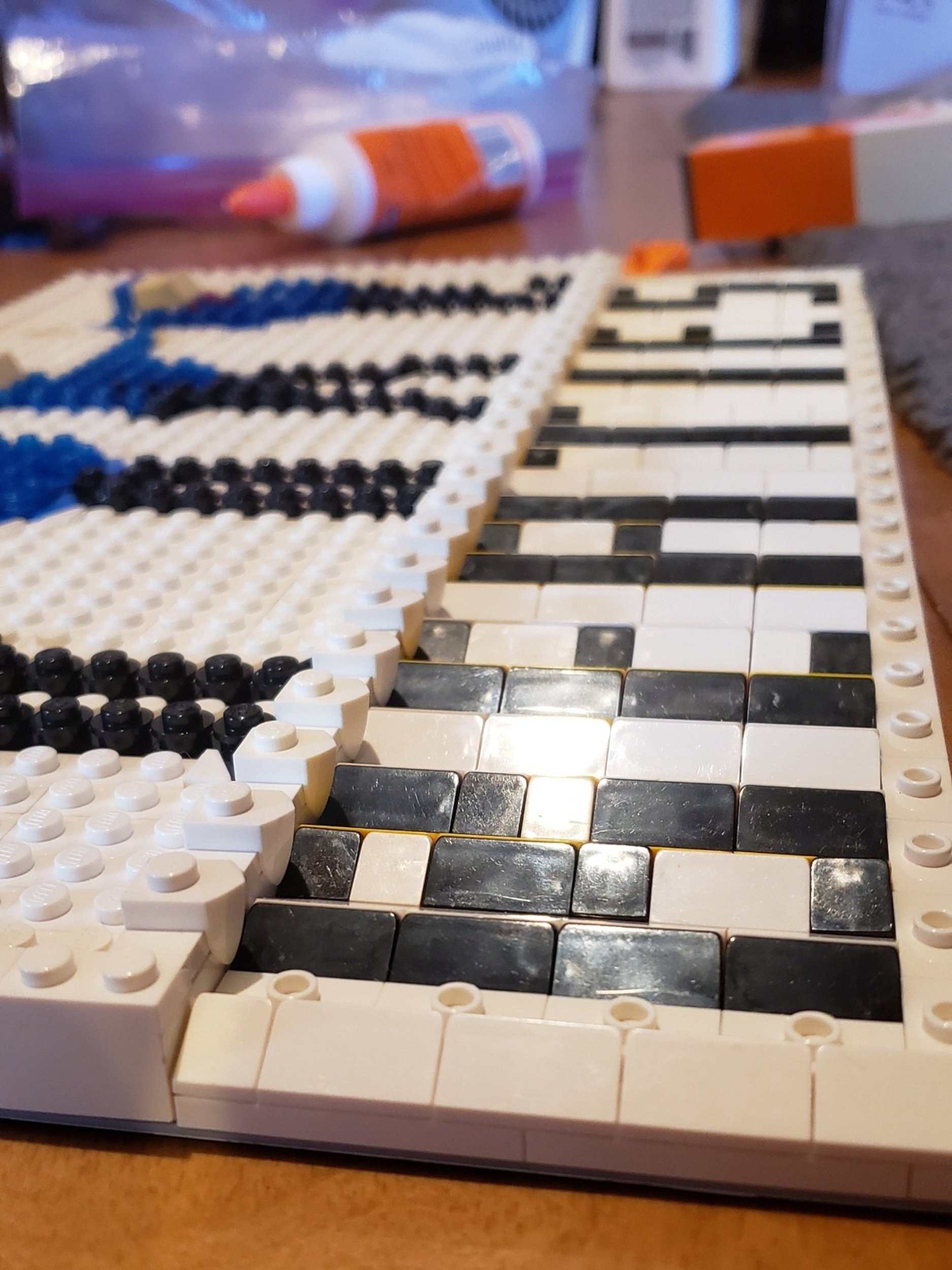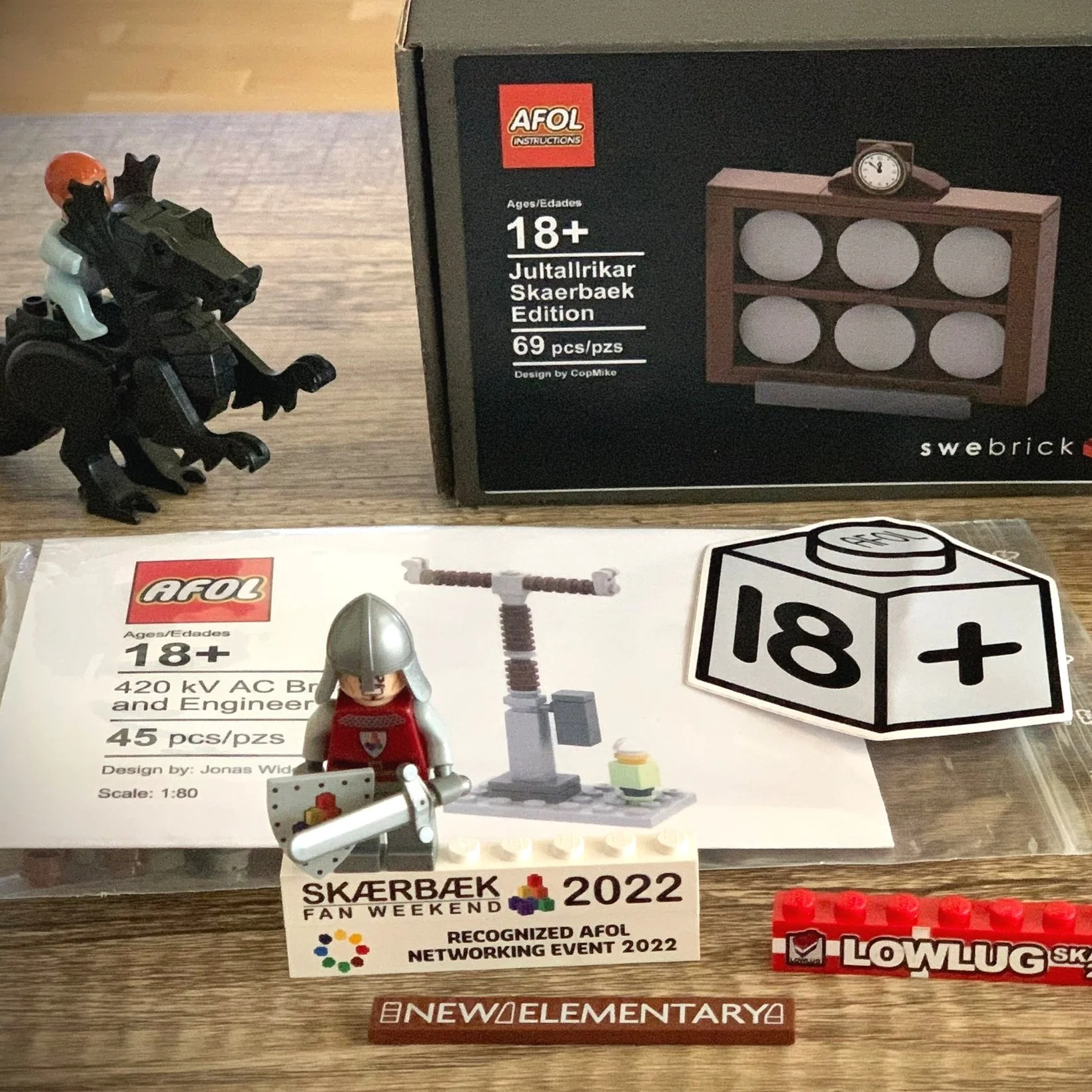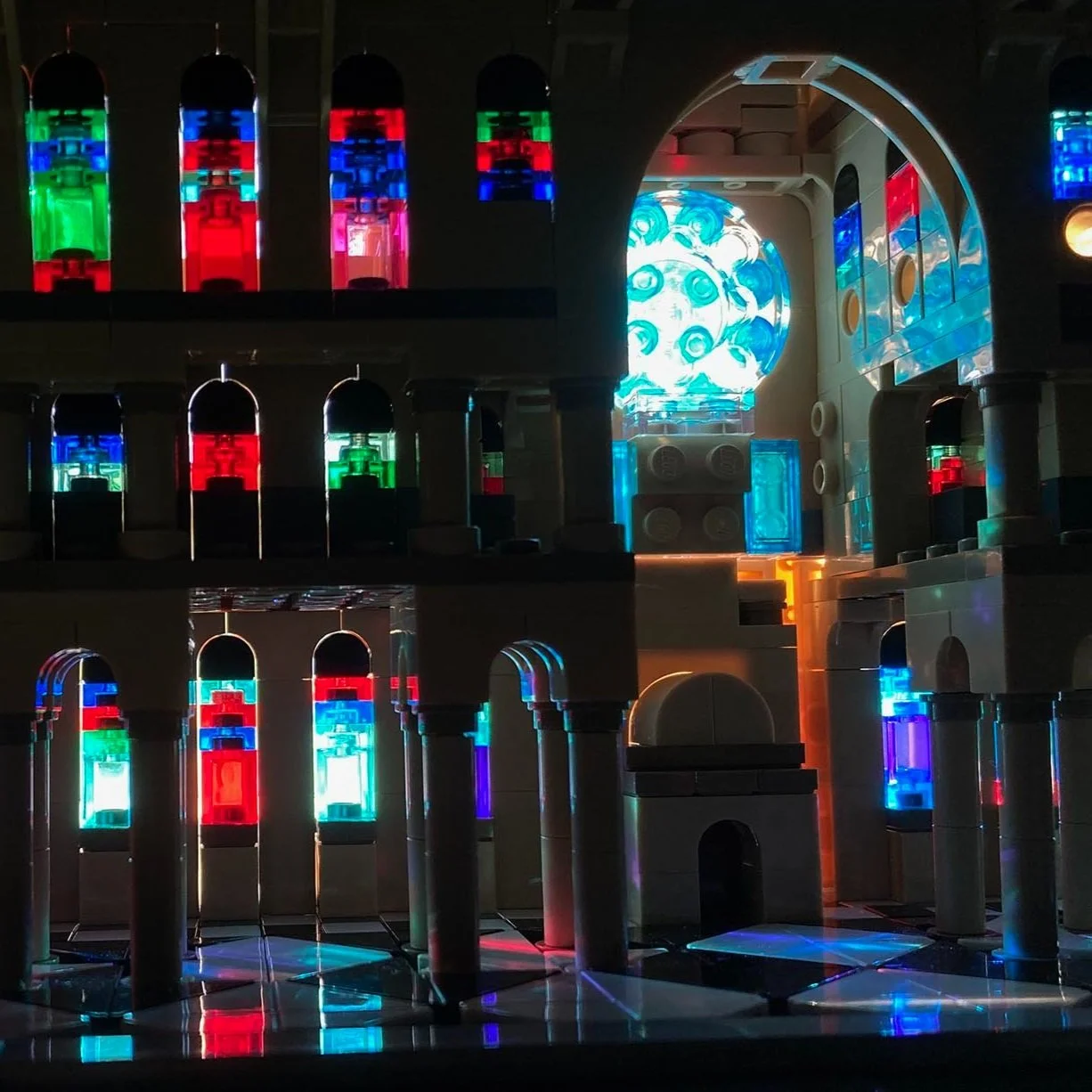Braille Bricks: Build and Feel
/Once upon a time, I was displaying my LEGO Beatles album covers at a crowded event on a tightly packed table, and a handsy child reached over the barricade.
*TOUCH*
Propped on easels, the thirteen album covers fell like dominoes. The MOC on the end shot dramatically in the air, flipping three times in slow motion. I leapt to the table’s edge, and caught “Please, Please Me” inches before it crashed to the floor. (It lived to see another day and even made the trip to Denmark.) All’s well that ends well.
Relax, We’ve Got Braille Bricks!
Many AFOLs have stories about unwanted LEGO advances when their MOCs have been on public display. Our LUGs post “do not touch” signs for a reason. So many of our building techniques are frail on a good day, and many more MOCs are held together with a whisper and a prayer. This article is not the time or place, however, for creations that involve physical fragility to please the eye. With LEGO’s release of Braille Bricks, I want to imagine a world of LEGO that is durable and meant to be touched.
I See With My Fingers
This month, LEGO released Braille Bricks to the general public in two languages - English and French - with plans to provide resources in other languages in the future.
The braille letters and punctuation marks are molded on five colors of 2x4 brick – red, yellow, dark azure, lime, and white. As a sighted person, my first notion is that color would be unimportant, but as New Elementary points out, these stark contrasts of color can be noticed by those who are visually impaired but not blind. The common letters’ colors correlate between the languages, but the numbers correlate to different letters in French than in English. For example, “A” shares the braille with “1” in English, but “” shares the braille with “1” in French. There’s so much here to learn.
The Braille Brick LEGO set boxes are wonderfully tactile. The images on the box can be felt. The braille lettering can be felt. Even the QR code can be felt. The QR code leads you to a series of games that help both the sighted and visually impaired think about building in a new way. For example, the first game instructs you to build two buildings on a baseplate, then two trees, then a mountain, and then a path connecting the two. This is easier said than done for a sighted person with eyes closed (me). On the other hand, someone who is accustomed to seeing with their hands might be able to build with an added layer of creativity. One could, for example, use the letters to build a word in the path or to name the buildings or the mountain or the trees. Seeing with ones’ fingers can add its own layer of creativity.
Building with Braille Bricks poses some new challenges for any AFOL. Many Braille Bricks have only one or two connection points, and do not have the clutch power necessary for vertical building.
While this poses some limitations for building, I can also see it being taken advantage of, for example, with microscale settings, which could take advantage of the unique smooth and patterned surfaces.
Depending on the letter, you get 12x, 8x, or 4x of each* Braille Brick in a set, with letter distributions seemingly different from my scrabble set. (*French has a few with 10x and 6x.) I wonder if the visually impaired community has workarounds for running out of letters. For example, a sighted person would use “X” and the ‘x’ multiplication symbol interchangeably, but those are different symbols in braille. After spending some time fingering the Braille Bricks, I have all sorts of questions about how perceptions of patterns and fonts.
Help Me To See
Going back to my anecdote about public MOC touching, it should be noted that one of the Beatles album covers (not the one that was touched) was designed for such a disaster. At the time that I built “HELP!”, The LEGO Foundation had just unveiled their Braille Bricks program. That particular Beatles album cover is all about letters, so I reckoned it was well-suited to be a tactile experience.
Building the semaphore-acting boys in their ski gear was fairly straightforward, but I added layers so that the image could be felt as easily as it could be seen.
I did employ a technique that would be inaccessible to the blind, but also it involved a tactile pattern and a trick to be seen visually: lenticular letters. From one angle, the cover reads “Beatles”, from the other “Help!”. From the front, it’s just a mess.
I employed elements with different textures – jumpers, cheeses, and claws - to make the experience more stimulating for the fingers. And since the official bricks could only be obtained through the LEGO Foundation, I created my own version of Braille Bricks. A blind person can read “Help” with their fingers.
I used the letters “H, E, L, P”, instead of “NUJV”, the letters acted out in semaphore on the cover.
Once More, With Feeling
When I heard that the Braille Bricks would see a public release, my dream of touching them for myself finally came true. I imagined what it would even be like to have a convention display (perhaps in a dark room) filled with MOCs specifically designed to be felt.
I spent many days pondering the topic in practical and artistic terms. I wondered what might be the best topic to address first in a MOC meant to be touched by a person who cannot see, and I remembered Helen Keller. The word “water” enabled Anne Sullivan to break through the deaf/ blind barrier. “W-A-T-E-R. Water!”
Of course, LEGO is not liquid, so I had to think of how that could even be conveyed.
I wanted a more modern notion, too, however, and I thought about my own children. Their first words were “Kitty” and “Cat”, even though we didn’t have such a pet at the time. With an internet full of feline memes, I reckoned that the animal’s hold on humans must be strong.
With these two notions in mind, I began to contemplate a MOC designed to be seen with fingers. First, I constructed the frame. I wanted to use the Braille Bricks as the foundation, but they weren’t sturdy enough, due to the previously mentioned inconsistency of connection points. The frame had to be built with standard 2x4 (etc) bricks, but at least I could use those bags of bricks that I hadn’t yet sorted by color. This looks ugly. But that’s the point. It doesn’t matter, since it feels the same. I built a “roof” on top, however, to enhance the experience for potential sighted tactile observers. “No peeking! Use your hands.”
In building a MOC designed to be felt, I reckoned that durability was the most important factor, which renders many building techniques off limits. I contemplated whether I should create distinct shapes or if I should rely on the feel of the different kinds of plastics produced by The LEGO Group.
I found myself, however, doubting all of these assumptions, as a sighted person. Additionally, many angles that I thought to employ stretched beyond how my collection is currently sorted. It made starting on this project difficult. I wonder how a visually impaired builder might sort their bricks. (Indeed, how ight an AFOL convention for the blind “look” and “feel”?)
Eventually, however, I came to conclusions that enabled me to build a first draft. On the “WATER” side, I used dots bracelet strands to symbolize the running flow of water rivulets, with a more flowing plastic. These splash into a pool outlined in sausage splashes. I employed fish and coral elements that could be clearly felt as objects recognizable in a water environment. Again, this looks ugly. And, again, that’s the point.
I went for a different angle on the “CAT” side. I wondered if a standard LEGO set could be felt for what it is. Could the cat polybag (#30574) be recognized by a visually impaired person as a CAT? How would that compare with a MOC? I used a build I had modeled after a MOC by Nobutary for comparison. Would either of these be “seen” as a cat without using your eyes? (I hid the word “MEOW” at the back. Will it be obvious, or an easter egg?
This first draft is full of self-doubt. I built this based on my sighted perceptions. Besides this, most first drafts are garbage. What will a visually impaired person actually think about my MOC? For that, I will need to reach out to that community.
DISCLAIMER: This set was provided to BrickNerd by LEGO. Any opinions expressed in this article are those of the author.
Stay tuned for part two, as I take those next steps. In the meantime, feel free to share any online examples of MOCs designed to be touched down in the comments section.
DISCLAIMER: This set was provided to BrickNerd by LEGO. Any opinions expressed in this article are those of the author.
Have you ever build something meant to be touched and not seen? Have you ever felt a LEGO brick with the bottom of your foot? Leave your thoughts in the comments below.
Do you want to help BrickNerd continue publishing articles like this one? Become a top patron like Charlie Stephens, Marc & Liz Puleo, Paige Mueller, Rob Klingberg from Brickstuff, John & Joshua Hanlon from Beyond the Brick, Megan Lum, Andy Price, Lukas Kurth from StoneWars, Wayne Tyler, LeAnna Taylor, Monica Innis, and Dan Church to show your support, get early access, exclusive swag and more.




































